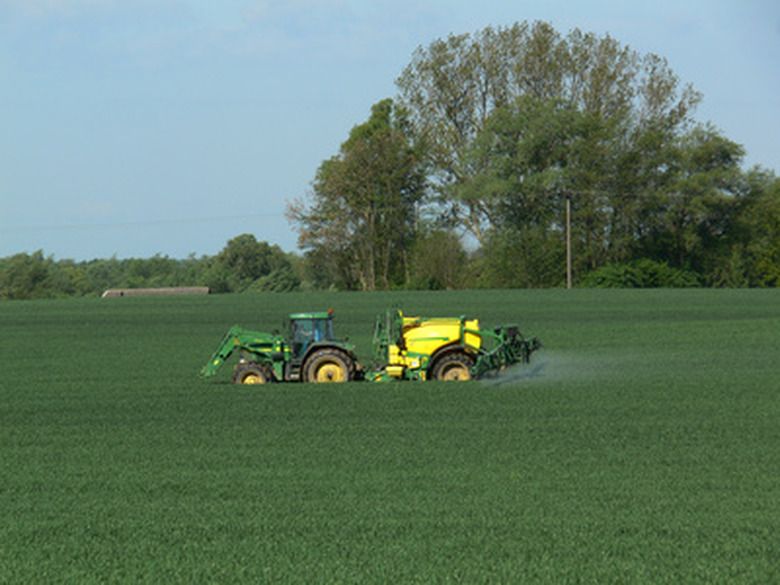Insecticides, Pesticides & Chemical Fertilizers
While insecticides and other pesticides, along with the advent of chemical fertilizers, has helped farmers produce sufficient and even excess crops, the environmental and health impacts have been severe and are continuing to grow. Sometimes these chemicals are researched poorly (if at all) for their impact on human health or the environment. Sometimes misuse by the farmer or gardener leads to inadvertent harm. But the long-term impacts are poorly understood until the chemical load builds up in homes and the environment.
Chemical Fertilizers
Chemical fertilizers were first manufactured large-scale during World War II as a better source of chemicals for explosives. Since then, chemical fertilizers have been used extensively to boost crop and garden production. But overuse has led to runoff and leaching that enters drinking water systems, poisons waterways and/or causes aquatic kills. Despite numerous warnings about using the proper amount of fertilizer at the correct times, over 40 percent of US waterways are at least partially jeopardized by fertilizers, and drinking water quality continues to deteriorate.
- While insecticides and other pesticides, along with the advent of chemical fertilizers, has helped farmers produce sufficient and even excess crops, the environmental and health impacts have been severe and are continuing to grow.
Insecticides
Even organic insecticides often come with health warnings. Organic pesticides are plant-derived, but some are highly toxic. The reason they are considered safer than many chemical insecticides is that they break down faster. Many chemical insecticides, such as DDT, have been put on the market in the United States and around the world with insufficient research to determine their detrimental side-effects on humans and the environment.
Other Pesticides
According to the Environmental Protection Agency, the term 'pesticide' refers not only to insecticides, but to any substance "intended for preventing, destroying, repelling or mitigating any pest." This includes mammals, fungi, microbes and plants. As the EPA points out, "By their very nature, most pesticides create some risk of harm–pesticides can cause harm to humans, animals or the environment because they are designed to kill or otherwise adversely affect living organisms."
Effects of Chemical Horticulture
In his investigation of the agricultural chain in the United States, Michael Pollan points out many of the side effects and costs of a food system based on heavy chemical dependence. Chemical fertilizers require high heat and pressure to produce, while all agricultural chemicals require plants, refineries, packaging and shipping. All of these have high fossil-fuel demands. And killing all the microbes, indigenous plants and animals in an area for a single type of crop has a long history of reducing the overall biological quality of the land.
- Even organic insecticides often come with health warnings.
- Many chemical insecticides, such as DDT, have been put on the market in the United States and around the world with insufficient research to determine their detrimental side-effects on humans and the environment.
Sustainable Practices and Permaculture
Sustainable practices rarely include even organic fertilizers and pesticides. Permaculture relies on intensive design to circumvent agricultural problems or incorporate them as part of the solution for another problem. For example, many weeds are valued for fixing nitrogen in the soil, which in turn acts as fertilizers. An abundance of harmful insects indicates poor plant health, a crippling lack of plant diversity and an absence of natural predators. The whole area is re-designed to allow natural processes to do the work that humans otherwise have to do.
References
- Colorado State University Cooperative Extension: Some Pesticides Permitted in Organic Gardening
- U.S. Fish and Wildlife Service, Environmental Contaminants Program: Chlorinated Hydrocarbons (Organochlorines)-DDT
- Environmental Protection Agency: What is a Pesticide?
- "The Omnivore's Dilemma"; Michael Pollan; 2006
